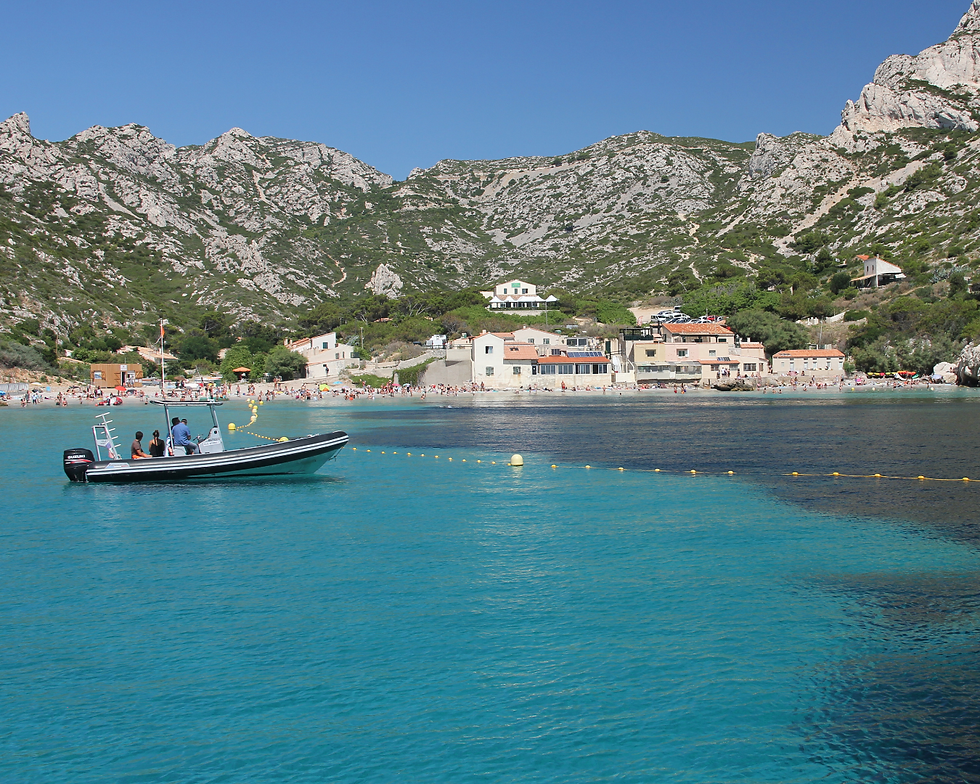Don't Paint Every Leaf: Mastering Mass vs. Detail in Landscape Art
- Natalia C.

- Apr 18
- 4 min read
Updated: May 4
You stand in front of a flowering bush or a densely wooded scene, and your first thought is: Where do I even start? Every branch, every leaf, every petal seems to demand your attention. And yet, deep down you know: trying to paint everything will lead to chaos. That’s where the concept of mass vs. detail comes in landscape art.
What is "Mass" in Landscape Painting?
In art, "mass" means visual grouping — the way our eyes naturally clump complex textures into shapes. Instead of seeing hundreds and hundreds of flowers, you might see three value blocks. Instead of painting every leaf, you see a silhouette against the sky.
This way of seeing is what transforms an overly literal copy of a photo into a dynamic, living painting. When we begin to see in masses, we unlock the painter's superpower: control over where attention goes. We stop copying what’s there and start interpreting it with artistic intention.
Massing is how to go from a photo to a painting — by filtering what matters and grouping it into shapes that hold structure, rhythm, and mood.
Why Detail Isn’t the Goal
Detail is like a spice, not the whole dish. In a landscape, detail works best when it's used strategically: a bit of sharp edge here, a pop of highlight there. Your viewer's brain is amazing at filling in the blanks. If you show just enough, they will feel the lushness of the foliage without being overwhelmed.
Think of a garden painting where only the top cluster of a lilac bush is rendered crisply, while the rest melts into value and shape. That contrast draws the eye, gives breathing room, and keeps the image from becoming visual noise. Well-placed detail is like eye contact in a conversation — it makes the connection. But too much, and the viewer no longer knows where to look.
How to See Masses Instead of Detail
It takes training and intention to shift from "seeing everything" to seeing in masses. Here are a few practical ways to develop this skill:
Squint your eyes. When you squint, the image simplifies into light and dark shapes. All that busy texture fades away, and you can identify the dominant forms. Try squinting and tracing the outline of a lilac bush or tree mass before adding any detail.
Convert the image to grayscale. Removing color helps you focus purely on values. You’ll see more clearly where the darkest darks and lightest lights are — the basic foundation of any strong painting.
Block in big shapes first. Use a large brush or the side of a pastel stick to lay in broad areas of color or value. This stops you from jumping straight to detail and helps maintain the integrity of your composition.
Simplify edges. Let most edges stay soft and undefined, only sharpening where you want the viewer to look. This trick can create depth and atmosphere with very little effort.
Look at your work from a distance. Step back and ask yourself: Does this read as a whole? Or is it all detail, with nowhere for the eye to rest?
Once you learn to paint in masses, you’ll start seeing opportunities everywhere: flowering trees and bushes, foliage-heavy backgrounds and even crowds of people in cityscapes.
Lessons from the Masters
Sometimes the best way to understand a concept is to see how the greats did it. The principle of mass in landscape painting isn't modern — it's something many of history's best landscape painters mastered in their own style. By studying how they handled complexity, we gain insight into how to simplify without losing emotion or presence. Here are few masterworks that beautifully demonstrate how selective detail and bold massing can bring a painting to life.

Notice the Caillebotte handled the flowers not as individual petals, but as loose shapes and rhythm. You feel the sunlight flickering across leaves, not because it’s rendered exactly, but because the masses are right. The composition stays lively and readable without getting overwhelmed.

Hassam’s woman sits surrounded by a soft haze of blooming lilacs. The texture is rich, but it’s the control of values that makes the structure readable. There are only a few points of sharp contrast. The rest is soft edges and rhythmic brushwork, letting the eye flow through the piece.

Cross uses bold strokes and pure color to block in masses. The flowers are not described individually, yet the scene feels completely alive. His layering of values and temperature gives the illusion of intricate form while staying painterly.
These artists weren’t skipping steps. They were simplifying with purpose. They painted what the eye remembers, not what the camera captures. Let their choices remind you that your role as an artist is not to show everything — but to choose what matters most. All examples show that simplification isn’t laziness — it’s artistic clarity. The painter decides what to show, and how much.
This week’s Landscape Art Club challenge is all about lilacs. And if you’ve ever stood in front of a lilac bush in full bloom, you know: they can feel impossible to paint. So let's paint fewer blossoms — and make them matter more! As usual, to help you with the challenge, I have prepared a detailed analysis of the references with some tips you can use.
Remember, mass vs. detail isn’t just a technique. It’s a way of seeing. A way of letting go of perfection in favor of presence, of control over chaos. And a big step toward making your landscapes feel more painterly, expressive, and truly yours!



Awesome examples,thanks Natalia!